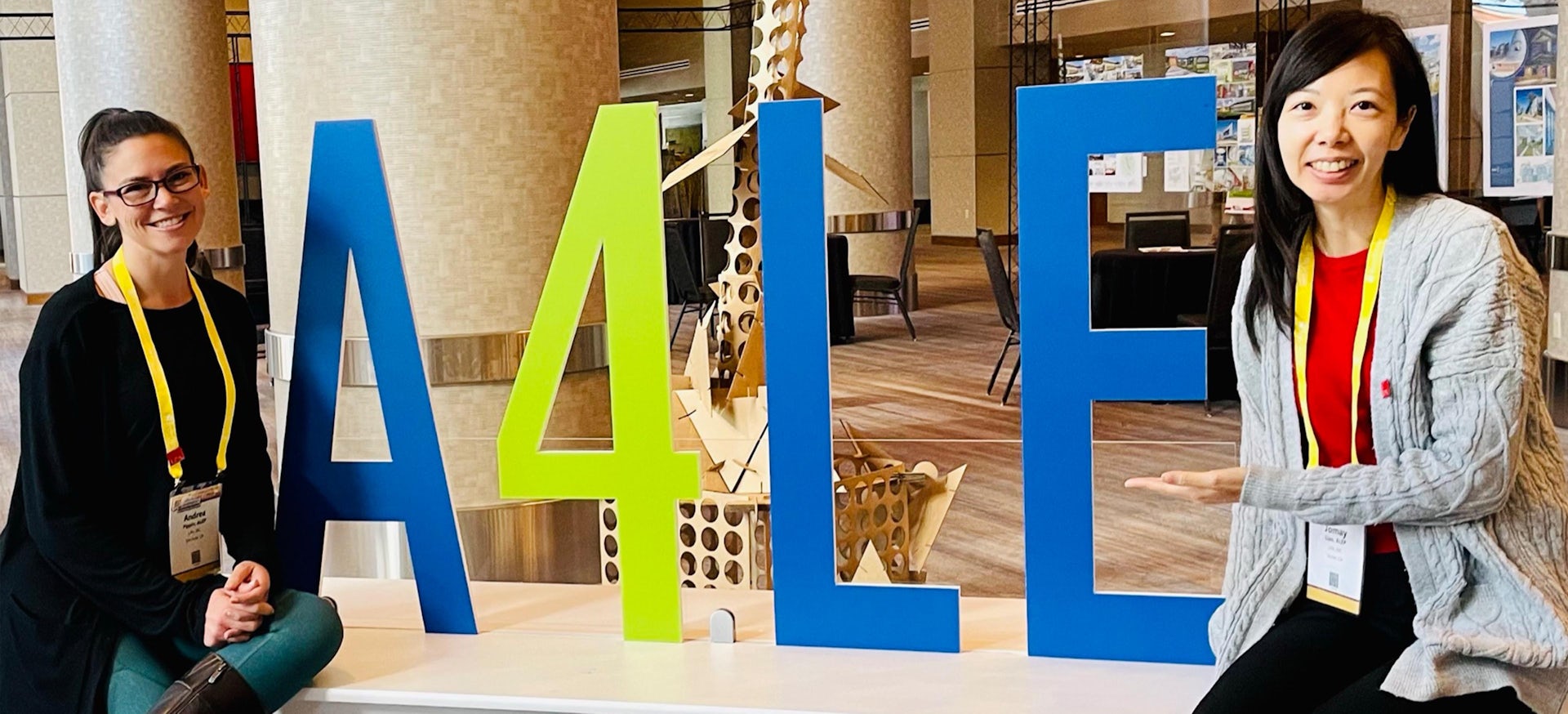LPA’s K-12 team recently participated in the national Association for Learning Environment (A4LE) Conference in Denver, the annual event bringing together educators, planners, government agencies and designers to discuss the latest innovations in K-16 learning environments. LPA designers led two panel discussions, focusing on the design of restorative environments and improving student engagement.
Many of the discussions centered on different ways of thinking about school design and reshaping education, especially with more and more schools built 50 to 75 years ago in need of renovation or replacement.
Innovations in K-12: Lessons from the A4LE Conference

Here are a few of the main insights from our team’s experience:
Restorative Environments. Well-designed restorative spaces result in better health, better thinking, better performance and more equitable experiences for teachers and students. LPA project manager and educational facility planner Jomay Liao and design director Winston Bao joined learning experience strategist Dr. Julie Zoellin Cramer, an LPA consultant, to discuss strategies for prioritizing wellness in K-12 campus design. Through case studies, they illustrated ways to successfully apply design components from healthcare, workplace and higher education projects to K-12 projects.
LPA presenters shared research indicating that a connection to nature reduces the impact of stressful events, increases positive feelings, improves creativity and lowers heart rates, blood pressure and cortisol levels. This can be accomplished in a variety of ways, including the incorporation of dynamic and diffused natural daylight from multiple angles and operable windows to improve ventilation.
“A connection either physically and/or visually, to the outdoors not only provides wellness benefits, it allows educators to use the outdoors as a teaching tool,” Liao says.
According to the research, wood, stone, wool, bamboo and other natural materials can elicit a positive visual and tactile response that enhances wellbeing, while water is proven to promote tranquility, and improve memory and concentration.

Integration with the Community. The pandemic’s effect on the connections between schools and communities was a recurring topic.
“The pandemic provided an opportunity for communities to become much more involved in supporting students’ learning and the student experience,” LPA Design Director Kate Mraw says.
Project and place-based learning is increasingly blurring the lines between subjects and strengthening connections between students, teachers and the community.
Connection to Place. By incorporating a sense of place into a school’s design, the facility can honor the location’s heritage, history and people, and even serve as a source of healing. However, at A4LE, designers were focused on the importance of thoroughly understanding a design element’s cultural relevance to that particular place, LPA design coordinator Andrea Pippin says.
“One story shared was about a teepee structure incorporated into the architecture for an indigenous community, but for this specific tribe, the teepee wasn’t their main form of dwelling – it was actually a sick house because it has better airflow,” Pippin says. “It's important to understand the culture of place you are tying a design feature to so that the experience is one that is appropriately meaningful.”

Student Engagement. Mraw was joined by representatives of DLR Group in leading a presentation on the importance of outreach and engagement in the pre-planning, design and post-construction phases of a school’s design (and the strategies and tools to make it work!)
“As we redesign these facilities from 50 or 75 years ago, it’s a moment to decide if we’re just repeating a cycle or if there’s a different way of doing things,” Mraw says.
Student engagement is critical in terms of informing what schools should be now and in the future. “A lot of designs out there are still done the way it was done in years past, but it’s important to know the students that are actually utilizing them think completely differently,” Liao says.
To generate the best feedback, designers should consider sending pre-work to participants ahead of the workshop to create a creative and engaging discussion, Mraw says. Setting a maximum group size for virtual engagement, and including a warm-up activity, interactive tools and music, makes it enjoyable and encourages participation. Explain to participants how their feedback will be applied. Giving them permission to take the floor to be heard will pay off. Finally, keep the process simple with clear instructions and timing to solicit the most meaningful feedback. Student input also resonates well with decision makers, which can facilitate alignment on design choices, Mraw says.
(Note: Mraw is currently working with a team to develop the agenda and the speakers for A4LE’s “Educating the Whole Child Symposium,” Jan. 6-8, in Washington DC)














